View in other NatureServe Network Field Guides
NatureServe
Montana
Utah
Wyoming
Idaho
Wisconsin
British Columbia
South Carolina
Yukon
California
New York
A Mayfly - Raptoheptagenia cruentata
State Rank Reason (see State Rank above)
This mayfly is currently listed as an "S2" species of concern in Montana because they are potentially at risk of extirpation in the state, due to limited and/or declining numbers, range and/or habitat, even though it may be abundant in some areas. This species is limited by intact large, prairie river habitat and potentially may be threatened by coal bed natural gas (CBNG) development in the Powder River basin of Wyoming (Stagliano 2012).
General Description
As with most Heptagenid mayflies, this species has a flattened body shape and head. Gills alongside the abdomen may be slightly oriented underneath the body. This mayfly species is a member of the large prairie river, sand-dwelling invertebrate assemblage of eastern Montana. It occurs in the cobble riffles and runs of the Powder and lower Missouri and Yellowstone Rivers in between long stretches of shifting sandbar habitat. Many large prairie rivers have been dammed affecting the substrate dynamics preferred by this globally uncommon and rare assemblage of insects dominated by mayflies (see also Lachlania saskatchewanensis, Aneperous rusticus, Macdunnoa nipawinia, Homoeoneuria alleni). This mayfly is also fairly unique among the order Ephemeroptera by being a predator, eating smaller insects, especially chironomid and blackfly larvae.
Diagnostic Characteristics
As with most Heptagenid mayflies, this species has a flattened body shape and head. Gills alongside the abdomen may be slightly oriented underneath the body. This mayfly is also fairly unique among the order Ephemeroptera in having raptorial (grabbing) maxillary palps indicative of a predator.
Species Range
Montana Range
Range Descriptions
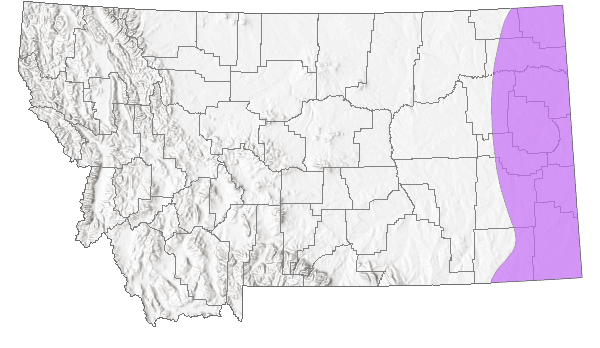
 Native
Native
Range Comments
Range includes Illinois, Indiana, Nebraska, Ohio, Tennessee, Montana, Manitoba, and Saskatchewan (Whiting and Lehmkuhl, 1987). Although considered an uncommon species from large rivers in the Midwest, this species was found to be abundant ond often taken in shallow riffles in small to large rivers in western North Dakota. Current records for Montana show the distribution is limited to the Powder River, but targeted habitat sampling in the lower Yellowstone and Missouri Rivers should produce more records.
Observations in Montana Natural Heritage Program Database
Number of Observations: 16
(Click on the following maps and charts to see full sized version)
Map Help and Descriptions
Relative Density
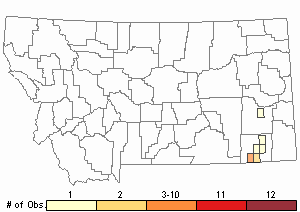
Recency
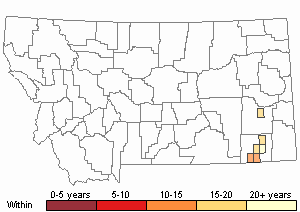
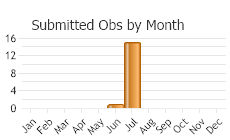
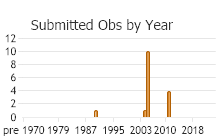
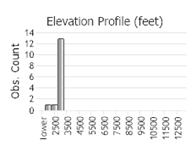 (Observations spanning multiple months or years are excluded from time charts)
(Observations spanning multiple months or years are excluded from time charts)
Migration
Non-migratory
Habitat
This species is associated with larger, perennially flowing prairie streams and rivers with sand-gravel dominated bottoms with cobble riffles.
Food Habits
This mayfly is also fairly unique among the order Ephemeroptera by being a predator, eating smaller insects, especially chironomid and blackfly larvae.
Management
Raptoheptagenia cruentata has no federal agency status at the present time, and was recently listed as a State Species of Concern by MNHP and MTFWP.
Threats or Limiting Factors
All forms of stream quality degradation pose potential threats. These include siltation; pollution from agricultural and industrial waste; and hydrological alteration from drainage, dams, or withdrawal of excess water for human use. This species is limited by intact large, prairie river habitat and potentially may be threatened by coal bed natural gas (CBNG) development in the Powder River basin of Wyoming (Stagliano 2012).
References
- Additional ReferencesLegend:
 View Online Publication
View Online Publication
Do you know of a citation we're missing? Stagliano, D.M. 2016. Mayflies (Insecta: Ephemeroptera) of conservation Concern in Montana: Status Updates and Management Needs. Western North American Naturalist 76(4):441-451.
Stagliano, D.M. 2016. Mayflies (Insecta: Ephemeroptera) of conservation Concern in Montana: Status Updates and Management Needs. Western North American Naturalist 76(4):441-451.
- Web Search Engines for Articles on "A Mayfly"
- Additional Sources of Information Related to "Insects"





